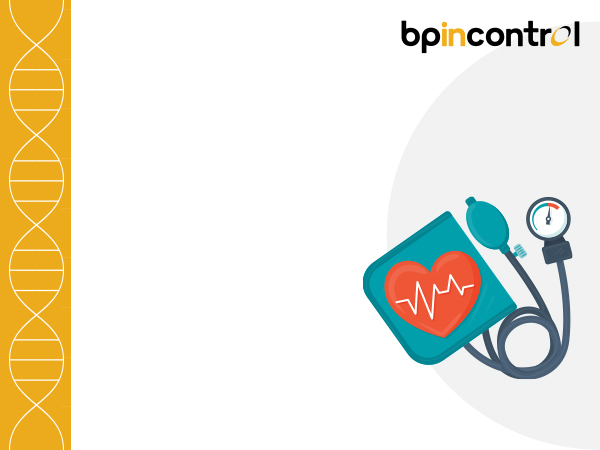7-Day Diet Plan for Weight Loss & BP Control

Table of Contents
Weight loss and BP management are crucial for maintaining heart health. Here’s a meal guide emphasizing a hypertension-friendly approach by incorporating the DASH (Dietary Approaches to Stop Hypertension) diet principles and low sodium intake which supports both cardiovascular health and effective weight loss.
Day-by-Day Meal Breakdown for Weight Loss and High Blood Pressure
This 7-day meal guide focuses on supporting heart health and promoting weight loss by maintaining a diet low in sodium and rich in potassium, magnesium, and fiber. Here’s how each day is structured to meet these goals:
Day 1
- Breakfast: Start with oatmeal topped with bananas and chia seeds, offering a strong dose of potassium and magnesium (350 calories).
- Snack 1: A crisp apple for a fiber boost (95 calories).
- Lunch: Enjoy a grilled chicken salad with greens, avocado, and nuts, using olive oil for healthy fats (400 calories).
- Snack 2: Carrot sticks with hummus, providing crunch and protein (150 calories).
- Dinner: Conclude with baked salmon, steamed broccoli, and quinoa, high in omega-3s and fiber (500 calories).
Day 2
- Breakfast: Greek yoghurt mixed with berries and flaxseed for a nutritious start (300 calories).
- Snack 1: A hydrating pear (100 calories).
- Lunch: Turkey and spinach wrap in a whole grain tortilla, keeping sodium levels down (350 calories).
- Snack 2: Unsweetened almonds, beneficial for heart health (120 calories).
- Dinner: Stir-fried tofu with assorted vegetables over brown rice, rich in protein and minerals (450 calories).
Day 3
- Breakfast: A nutrient-rich smoothie with spinach, pear, banana, and almond milk (280 calories).
- Snack 1: Bell peppers with low-fat cheese, high in vitamin C and calcium (110 calories).
- Lunch: Lentil soup with a side of whole wheat bread, rich in fiber and protein (380 calories).
- Snack 2: An orange, refreshing and full of vitamin C (62 calories).
- Dinner: Grilled mackerel with sweet potato and asparagus, excellent sources of potassium and fiber (480 calories).
Day 4
- Breakfast: Scrambled eggs with spinach and tomatoes, offering protein and iron (290 calories).
- Snack 1: A potassium-rich banana (90 calories).
- Lunch: A quinoa and chickpea bowl with fresh vegetables, providing protein and fiber (420 calories).
- Snack 2: Greek yoghurt with raspberries, loaded with calcium and antioxidants (150 calories).
- Dinner: Turkey meatballs with spaghetti squash, a satisfying low-carb and high-protein meal (450 calories).
Day 5
- Breakfast: Cottage cheese with peaches and walnuts, blending protein with heart-healthy fats (320 calories).
- Snack 1: Cucumber and cherry tomatoes, offering hydration and nutrients (50 calories).
- Lunch: Baked tilapia with a kale and apple salad, rich in lean protein and fiber (350 calories).
- Snack 2: Pumpkin seeds, a good source of magnesium for blood pressure control (150 calories).
- Dinner: Vegetable stir-fry with tofu and jasmine rice, providing a balanced meal with essential amino acids (530 calories).
Day 6
- Breakfast: Whole grain pancakes topped with blueberries, full of antioxidants and fiber (310 calories).
- Snack 1: Mixed nuts, known for their blood pressure-reducing effects (180 calories).
- Lunch: Chicken vegetable soup with barley, comforting and nutritious (360 calories).
- Snack 2: An apple with peanut butter, offering a blend of fiber and protein (180 calories).
- Dinner: Beef stew with potatoes and carrots, rich in iron and fiber (540 calories).
Day 7
- Breakfast: Chia pudding with almond milk and kiwi, high in omega-3 fatty acids and vitamin C (280 calories).
- Snack 1: Grape tomatoes with mozzarella, a calcium-rich, low-sodium snack (120 calories).
- Lunch: Grilled shrimp over mixed greens with avocado, full of essential fatty acids and fiber (410 calories).
- Snack 2: Dried figs, a sweet source of fiber (100 calories).
- Dinner: Roast chicken with Brussels sprouts and sweet potatoes, blending flavors and nutrients for a balanced meal (490 calories).
Tips for Effective Meal Prep
To simplify your week, prepare large batches of staples like grains, vegetables, and proteins in advance. Portion out snacks and pre-assemble lunches to ensure you stick to your meal plan effortlessly, saving time and reducing the temptation to stray.
Adjusting Calorie Intake
To tailor this meal plan to different calorie needs, reduce serving sizes for a 1,200-calorie diet or add nutritious extras for a 2,000-calorie regimen. Adjusting portion sizes and incorporating additional snacks can help meet your specific energy requirements effectively.
Summary
The above meal plan is designed to enhance weight loss and BP management, which is essential for maintaining heart health. Take the first step towards a healthier you by adopting these nutritional strategies. However, do note that everyone’s body reacts differently to such regimes. In case these strategies do not work for you, make sure you seek professional guidance and find an option that is aligned with your body composition and lifestyle.
Sources
https://www.eatingwell.com/article/7834741/healthy-high-blood-pressure-meal-plan-for-beginners/
https://www.eatingwell.com/article/8054828/7-day-weight-loss-meal-plan-for-high-blood-pressure/
https://www.medicinenet.com/a_7-day_diet_plan_for_high_blood_pressure/article.htm
https://www.healthifyme.com/blog/hypertension-meal-plan-1500-calories/
Disclaimer- This article is for information purpose only. Always consult your doctor in case of any blood pressure or other health-related problems.
Disclaimer
The information contained in this article is to educate, spread awareness in relation to hypertension and other diseases to the public at large. The contents of this article are created and developed by BPinControl.in through its authors, which has necessary, authorisations, license, approvals, permits etc to allow usage of this articles on The Website. The views and opinions expressed in this article are views, opinions of the respective authors and are independently endorsed by doctors. Although great care has been taken in compiling and checking the information in this article, The Website shall not be responsible, or in any way liable for any errors, omissions or inaccuracies in this article whether arising from negligence or otherwise, or for any consequences arising therefrom. The content of this article is not a substitute for any medical advice. The Website shall not be held responsible or liable for any consequence arising out of reliance on the information provided in the article.


Comments (0)
No comments found.Add your comment